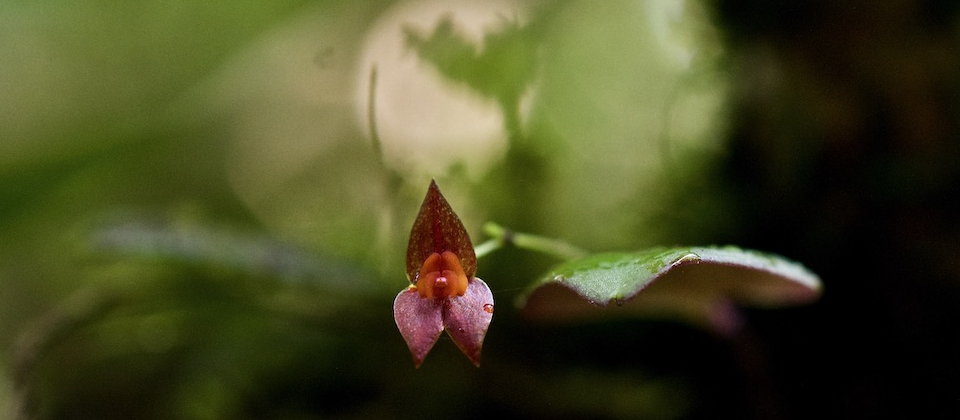
Published on 17 November, 2019.
Introducing a constellation of 40 orchid species living in the Baracoa region, in eastern Cuba: strange, delicate beauties that will captivate the caring eyes of wildflower lovers!
For starters, this exquisite Tolumnia sylvestris. Found in Cuba, the Bahamas and other Antillean islands, this orchid grows in pine forests. It would seem to take root on the soil, but it attaches itself to fallen, thin pine branches at ground level. You can see it in the El Recreo forest at Alexander Humboldt National Park.
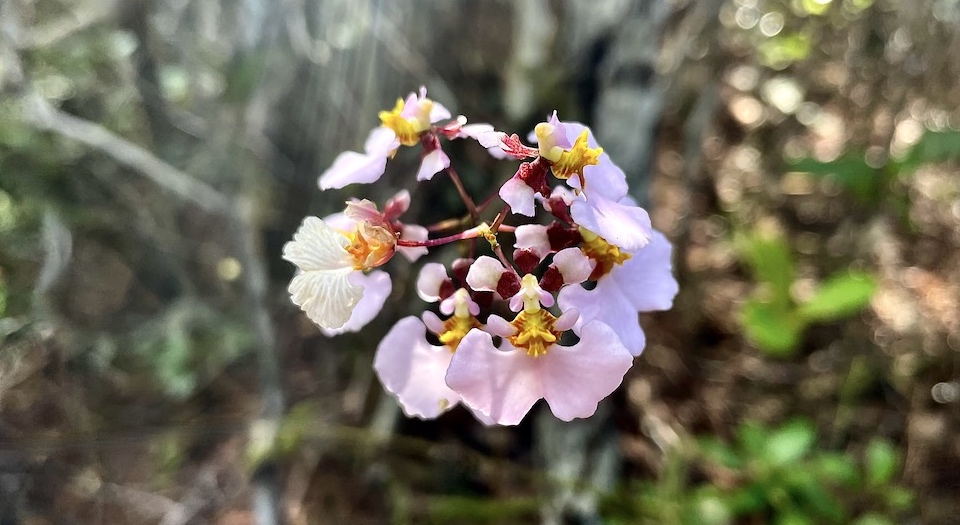
In this post, we will start by showing you a few species classified according to the substate in which they take root. Then, some other species according to their habitat or the type of forest where they live. But the main draw comes later: a wide range of Cuban endemic orchids, with an emphasis on those living only in the country’s north-eastern mountain range, then finishing off with species that are exclusive to the Baracoa region.
[Please note: this post was updated in May 2024.]
Spotting and Appreciating Wild Orchids in Baracoa’s Protected Areas
A few of these flowers are relatively easy to spot. But others grow in shady humid corners, on specific types of rock or trees– or even on the ground, but in the least suspected places.
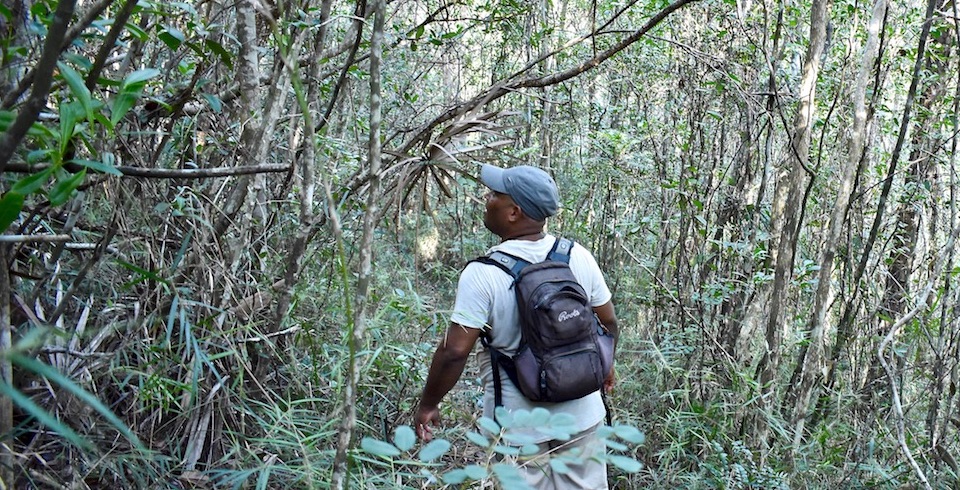
For several of the species pictured in this post, we’ll let you know the type of environment in which they grow, providing a link to specific protected area where we found them and/or where they can be seen. But we won’t pinpoint their specific location – a qualified nature conservation guide will be able to show them to you.
Orchid Species According to Various Types of Substrates
Orchids can be classified according to the type of material where they take root (the substrate). Thus, in Cuba you find epiphyte species (those that grow attached to a tree trunk or branch), lithophyte or rupicolous species (taking root on rocks), terrestrial (growing directly on the soil) and vines or climbers (these may float, hanging from branch to branch). Having said that, some species can be both epiphyte and lithophyte, for instance.
Epiphyte Orchids
This orchid sprinkled with spots is popularly called monedita (little coin) after its round-shaped pseudobulbs. It’s a Prosthechea boothiana and it grows in both serpentine and karst areas. It lives in Florida, Mexico, Central America, the Bahamas, and some Caribbean islands. We’ve found it in various local protected areas.
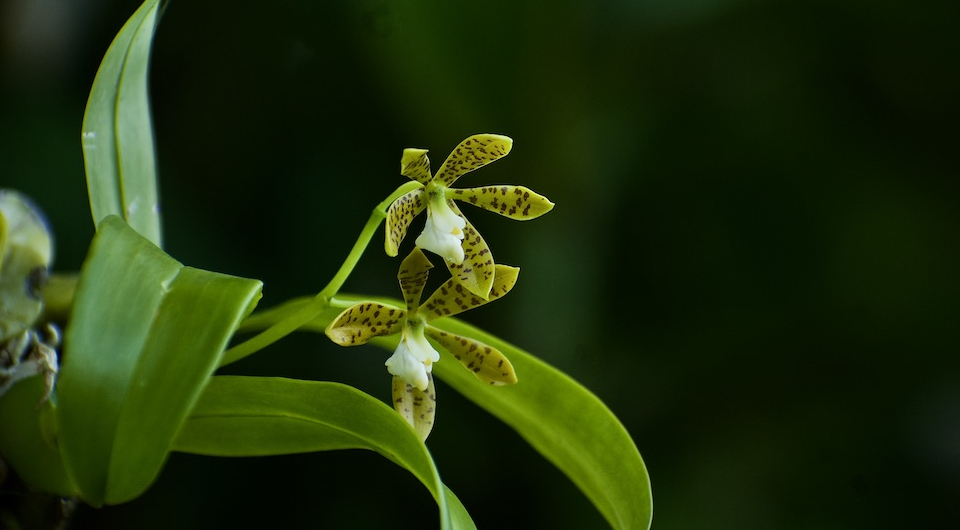
Here you have the beautiful Comparettia falcata. It is present in the Antilles and Central America, and it delighted us with its bright colour along the mountain road called the Via Mulata, at the heart of the Cuchillas del Toa Biosphere Reserve. They bloom November through April.
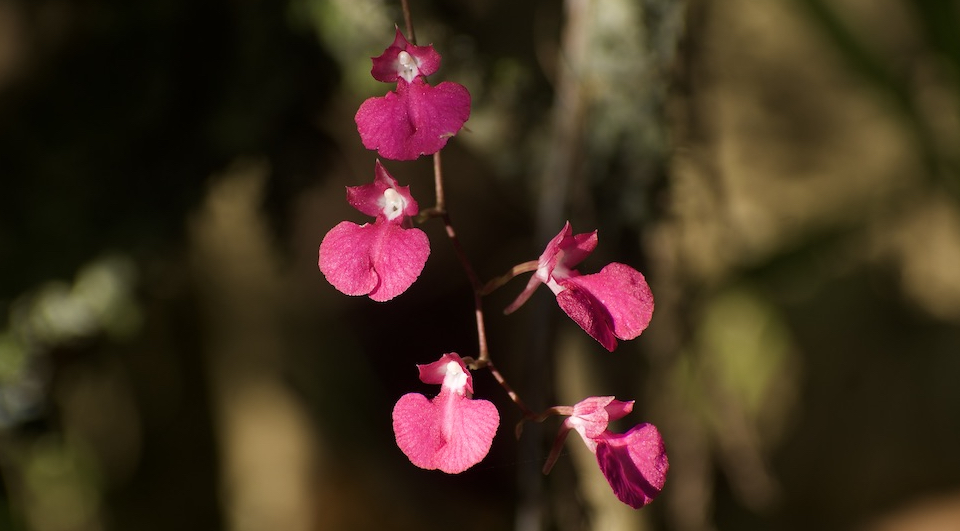
We saw this Encyclia acutifolia at the onset of the Balcon de Iberia trail, in the Santa Maria community at Alexander Humboldt National Park. It lives in Cuba, Haiti, and the Dominican Republic, and it’s considered to be threatened.
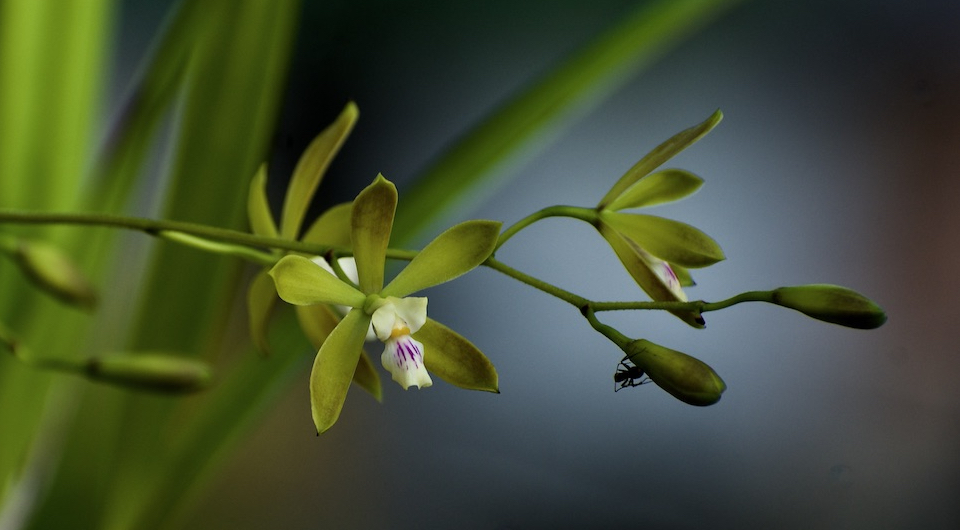
Lithophyte or Rupicolous Orchids
This species is a year-round bloomer. It’s an Epidendrum polygonatum and it lives in Cuba and the Dominican Republic, with a couple of records in Colombia. We saw it in mount El Yunque’s protected area.
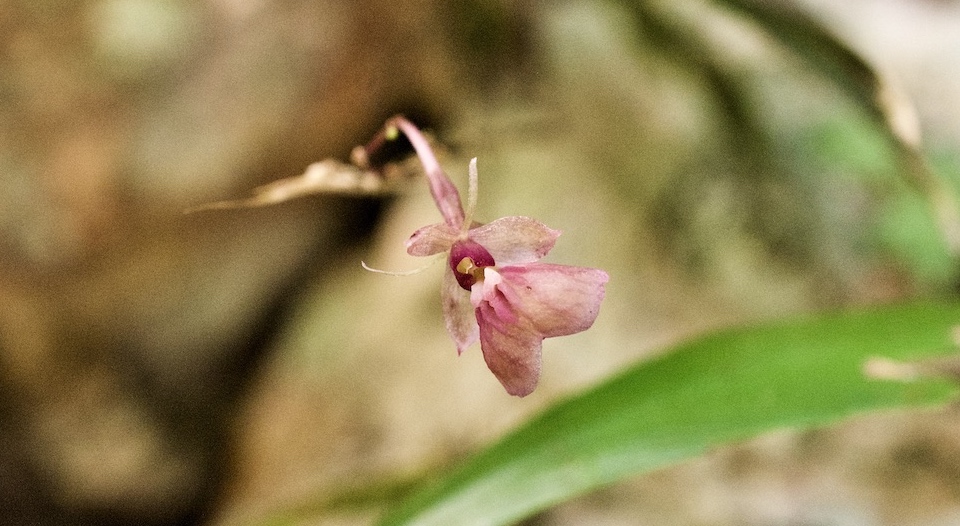
A classic lithophyte in Cuba is Encyclia moebusii, which we will show you a bit later, in the section about the species that are endemic to Cuba’s north-eastern region.
Terrestrial Orchids
This Bletia purpurea stems from a pseudobulb. You can appreciate it in and around UNESCO-listed Alexander Humboldt National Park or along the amazingly scenic La Farola road. It is found in all of Cuba, and it is present from Florida through the Caribbean, Central America to northern South America.
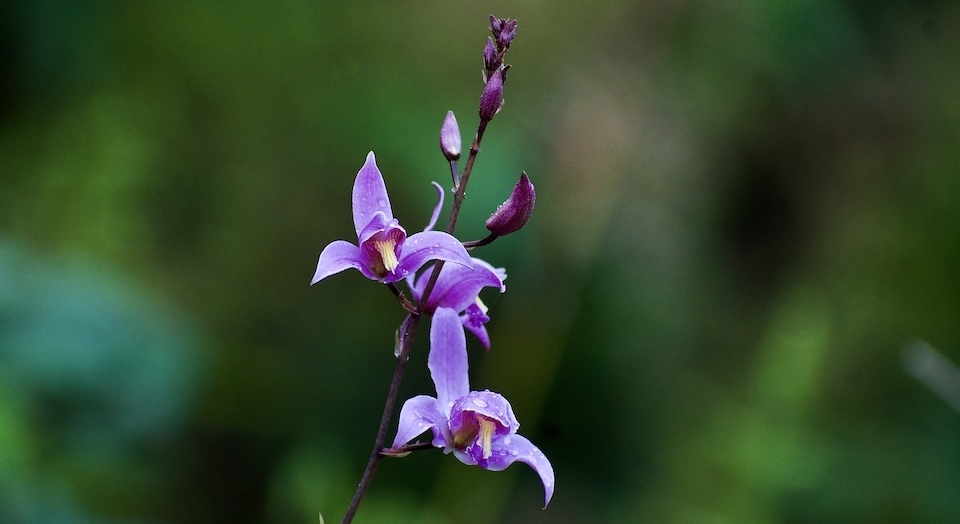
Here’s yet another lovely orchid: the Sacoila lanceolata, which grows on grassy areas on hills near farms. This one was within the communities by river Las Minas. It can be found in the tropics of the Americas.
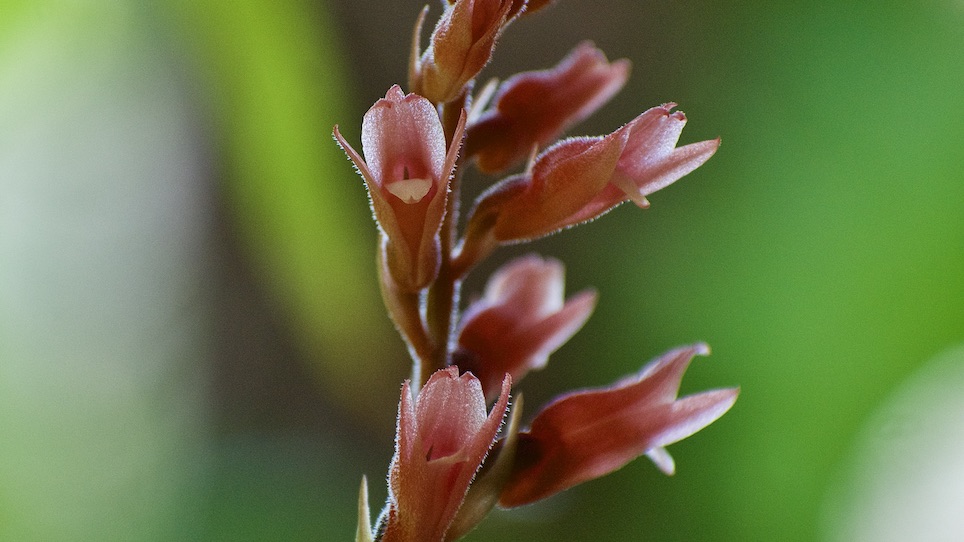
In the mountains in Quibiján we found this Habenaria monorrhiza, also present in other parts of the country, as well as in other tropical areas of the continent. In Cuba, it is pollinated by the Cuban Emerald hummingbird (Riccordia ricordii).
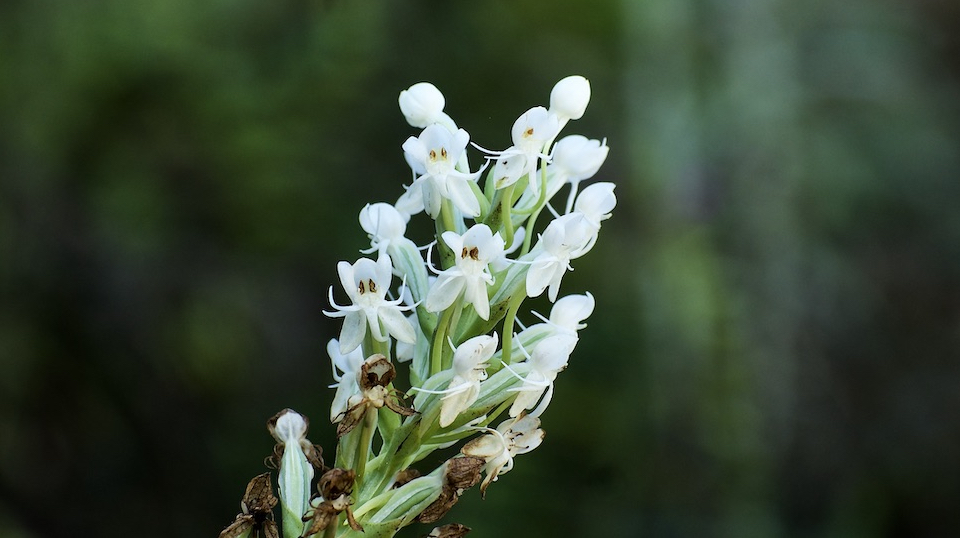
Climbing Orchids
A beautiful example of climbing orchids is this Vanilla claviculata. The best time to see it blooming is the month of July. It can be found in the charrascal type of forests in areas or serpentine soil (we will talk more about this habitat further down in this post).
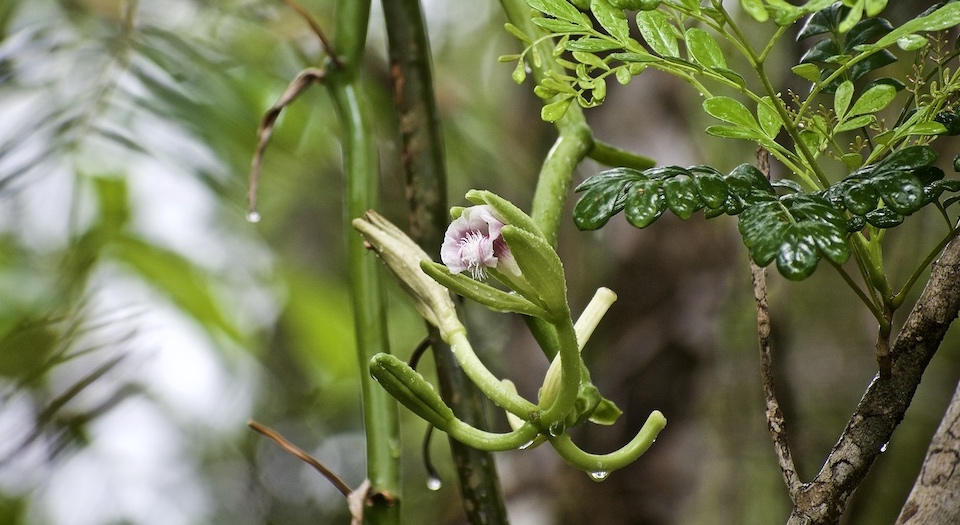
Orchid Species According to Habitat, Forest or Flora Complexes
Orchids vary as well according to the type of soil, habitat or flora that surrounds them. And depending on the elevation. They can live in coastal karst areas, hinterland limestone environments, serpentine and laterite rock terrains, agricultural lands… And some can be found in more than one type of habitat.
Coastal Karst
Coastal areas feature various orchid species. This Cattleyopsis lindenii (formerly classified as Broughtonia lindenii) might look delicate but is extremely hardy. I can grow right by the sea, but also in farmlands or woods not far from the coast. The one we see here was on the geological terraces in Yara-Majayara protected area. It is an epiphyte orchid, and it lives in Cuba, the Bahamas, and Jamaica.
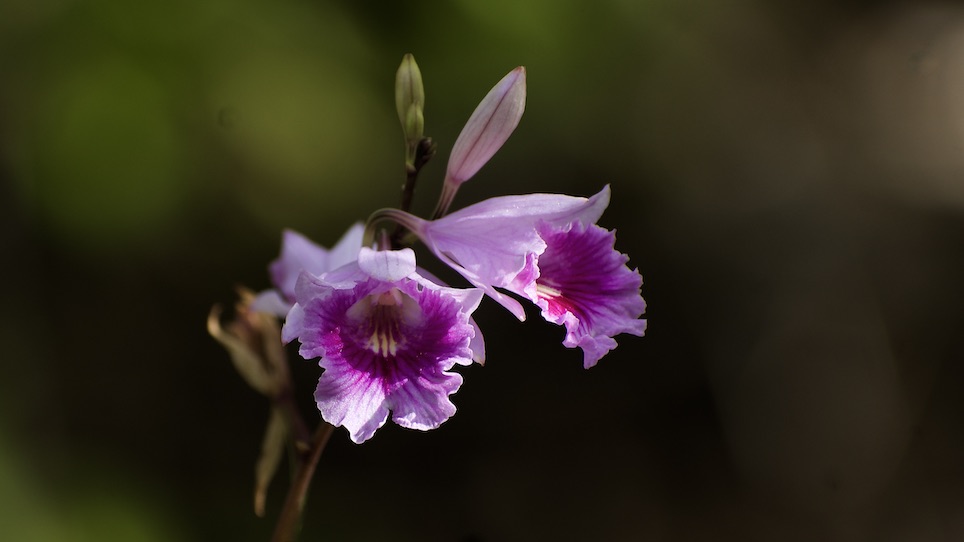
Hinterland Karst
Here’s a Pleurothallis tribuloides (until recently included in the genus Tribulago), which we’ve spotted several times attached to endemic palm trees in hinterland karst at El Yunque and other local summits. It can be found in Cuba, Hispaniola, Jamaica, and Central America.
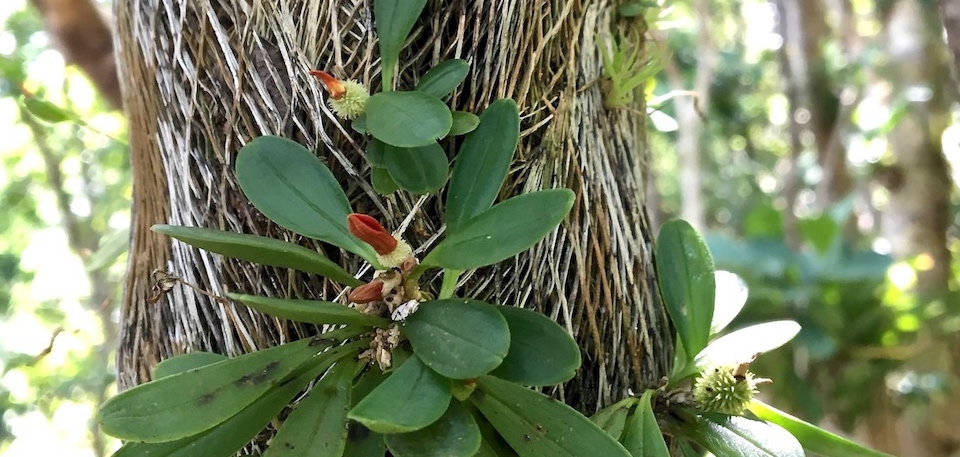
Serpentine and Laterite Rocks
Baracoa’s mountains include large serpentine and laterite rock areas. Although such types of rock can hardly be considered fertile, a beautiful flora called charrascal has emerged and evolved over the centuries on such an unyielding, difficult substrate. Here are some orchids you’ll find in these areas.
The Dichaea hystricina surprised us at around 600 meters above sea level, high in the Iberia plateau in Alexander Humboldt National Park, on the way to Laguna de Iberia.
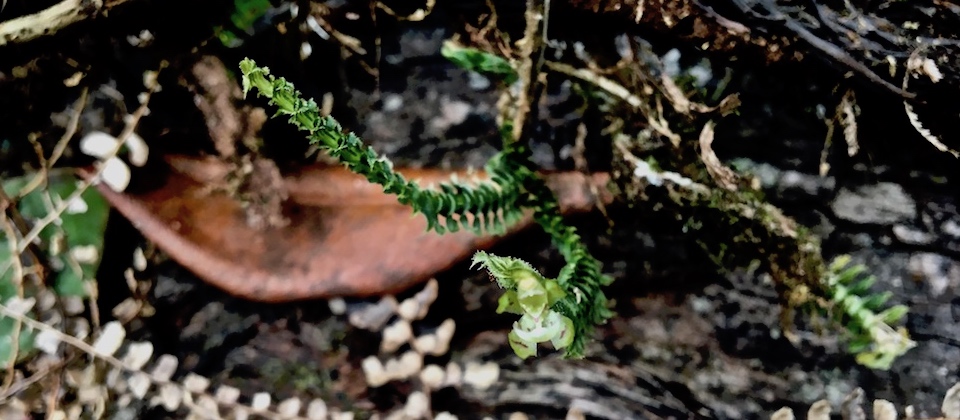
Yet another favourite of ours, the Epidendrum nocturnum with its long, slender sepals and petals grows both as an epiphyte and lithophyte, and even on grassy substrate near the floor. We saw it in the mountains just south of Baracoa.
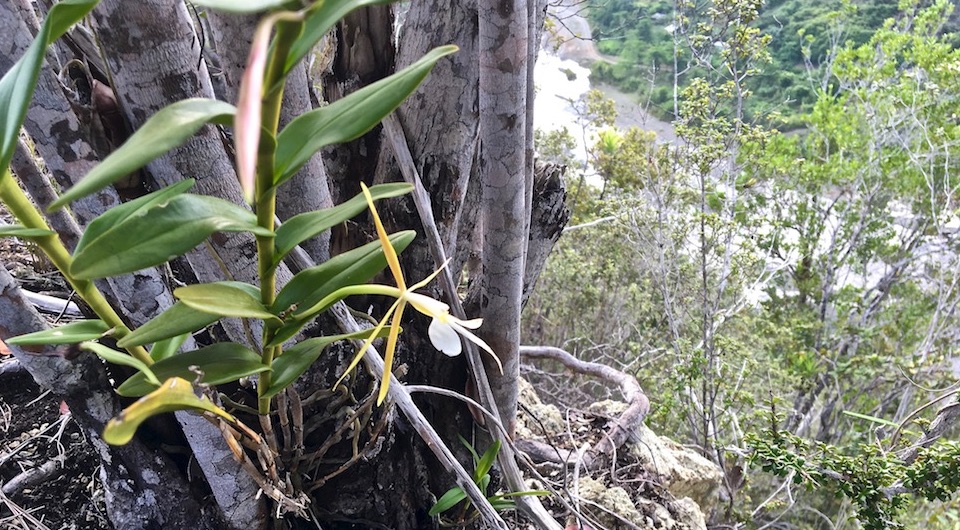
Farmlands
If you visit Baracoa’s farmers, don’t hesitate to ask them whether there are any orchids in their land. They will be able to point you to a couple of species growing naturally on some of their trees – or maybe one or two that they are cultivating in the garden by their house.
The Ionopsis utricularoides loves the thin, outer branches of citric fruit trees. It can be found in the Antillean islands and other tropical countries in the Americas. We saw this one at a small family farm on river Toa’s shore.
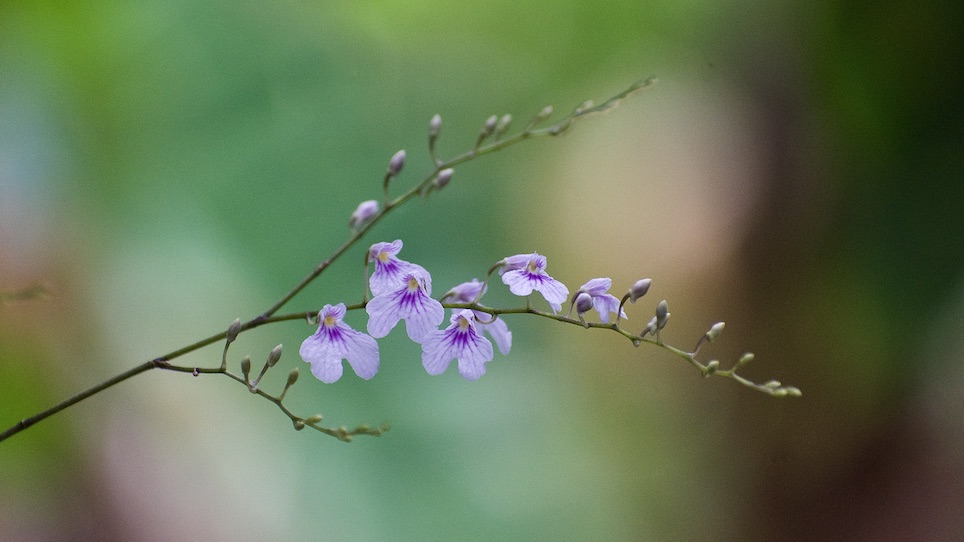
The Prosthechea cochleata is quite a bloomer and it’s widely distributed in the Baracoa region, with its dark burgundy, shell-like labellum and its pale petals and sepals that resemble an octopus’ tentacles.
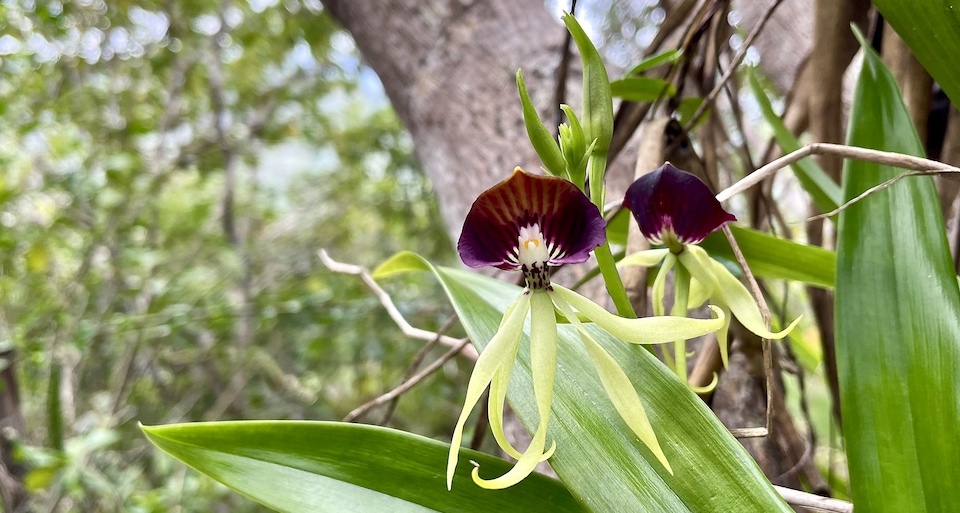
More Than One Type of Habitat
We got to see these two beauties respectively at 230 meters above sea level in the Quibiján area, where tree ferns abound, and at the steep uphill trail leading to Laguna de Iberia, at Alexander Humboldt National Park. The first one is a Stelis ophioglossoides miniature orchid and the second one, a Prosthechea fragrans.
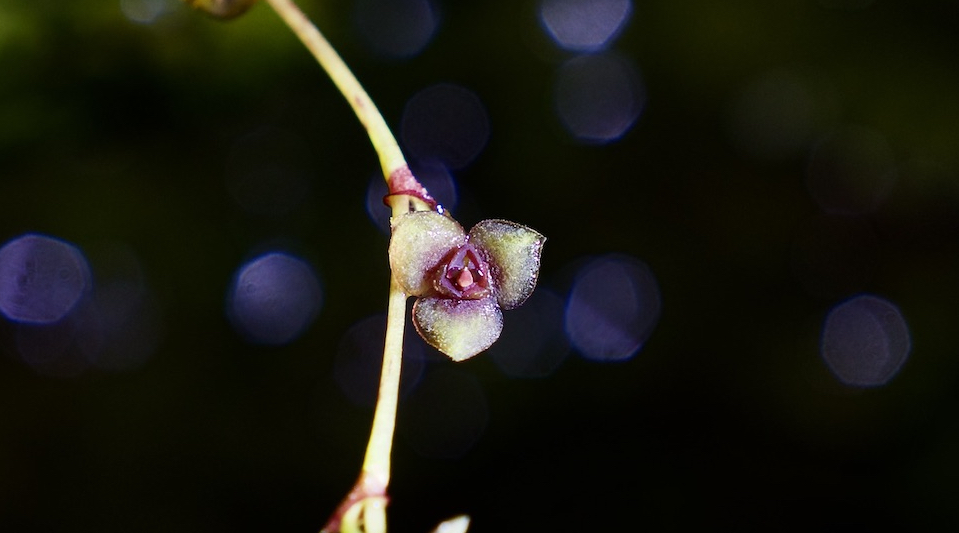
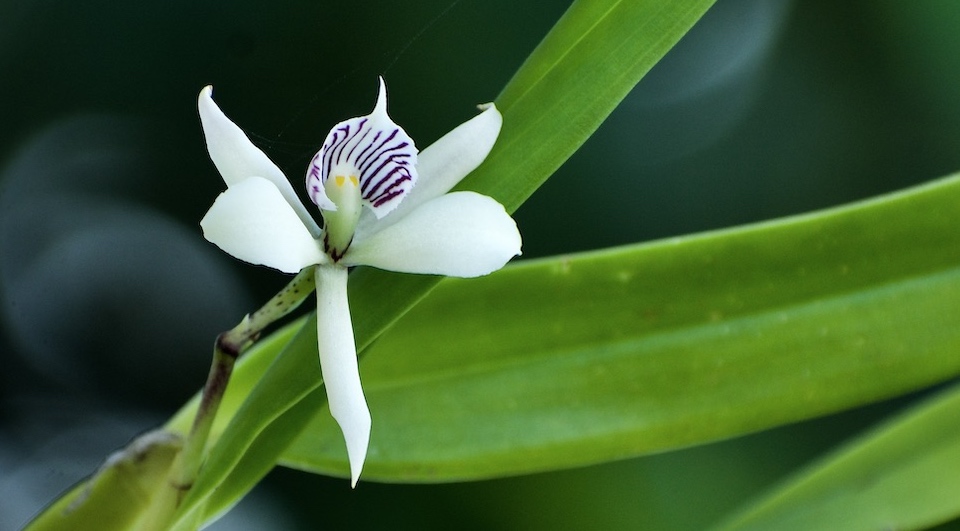
Different zones and habitats are home to the Bletia patula: in lowland karsts in the Barrancadero area, near the family-run cacao farms on the way to the Yumurí Canyon, as well as in highland serpentine rocks along the Vía Mulata road.
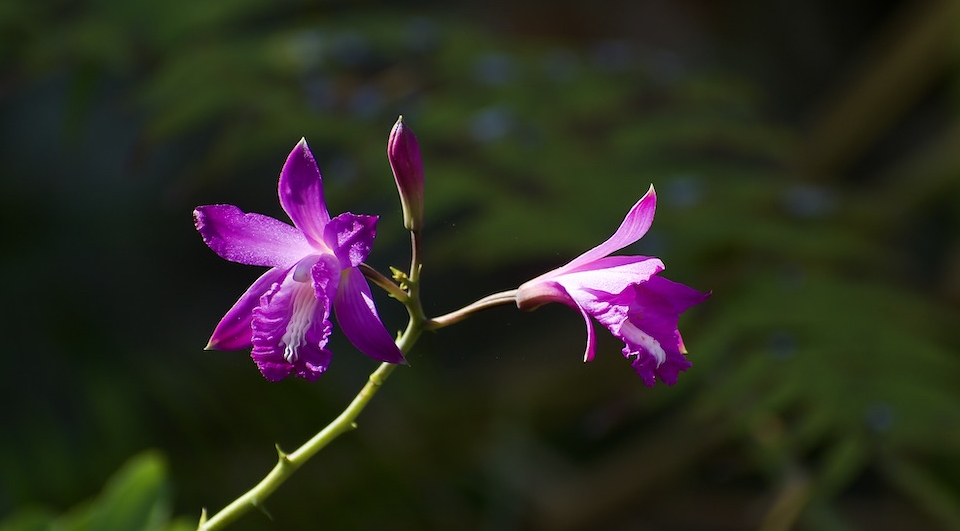
Only in Cuba – Endemic Orchid Species
Let’s now show you over 20 species that are endemic to our country. We will start with a few that can be seen in different zones of the island (the west, the centre, the east). We’ll then show you species that are endemic to the north-eastern mountain range, where we are located. And we conclude with strictly Baracoan, local endemic orchids – including one that has been previously reported but is yet to be described, and two species never seen before (until very recently).
Endemic to the Country – Orchids from Various Zones in Cuba
The Encyclia phoenicea is a very popular orchid among Cubans. It releases a vanilla-like aroma that attracts bees, its pollinators. It can be both epiphyte and lithophyte and it lives in various kinds of habitats in different zones of the island. This one was within the charrascal flora in the area known as La Cuaba, just south of town.
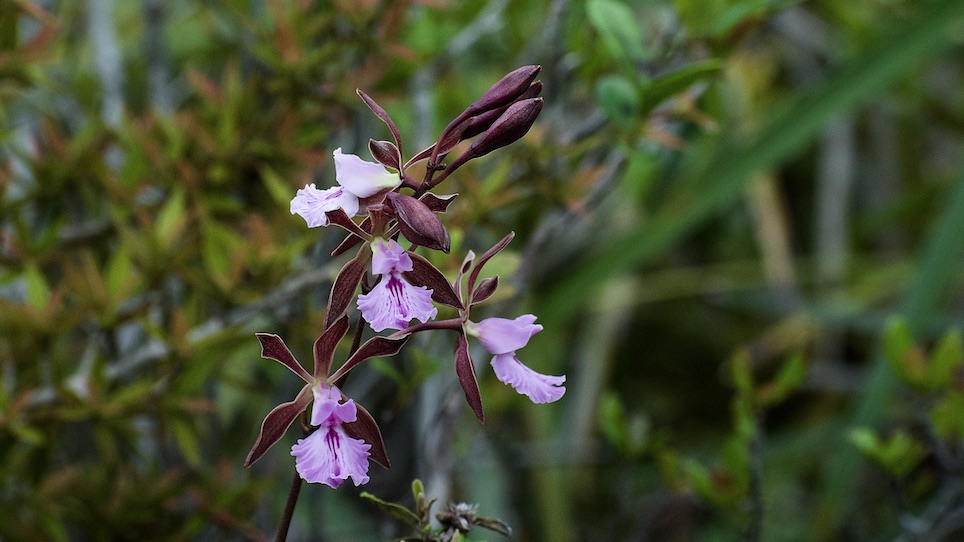
Look at this minute (less than 5 mm) Pleurothallis grisebachiana (until recently classified under the genus Specklinia). It grows on the trunks of certain types of trees, near the summit of flat top mount El Yunque, an iconic hinterland karst in our region. It is an epiphyte and is considered threatened.
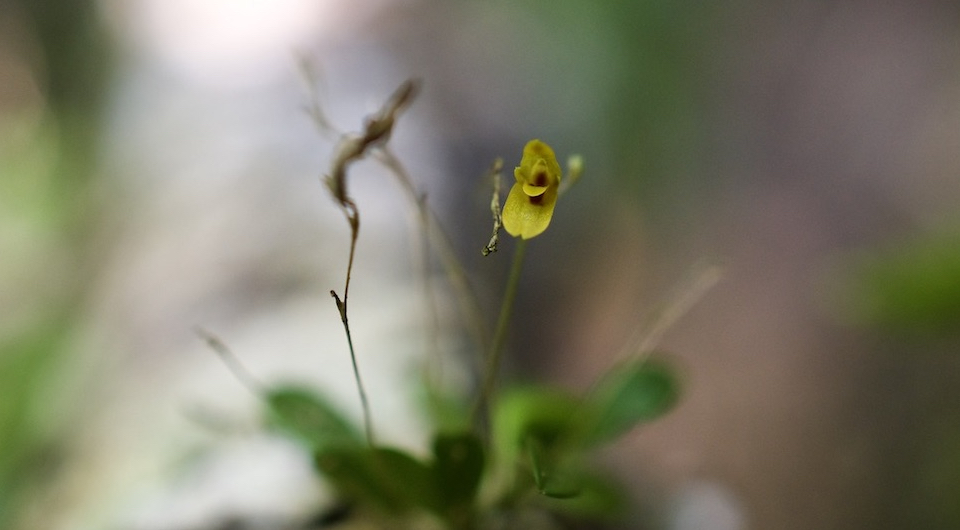
The Tolumnia guibertiana is amazing: it lives among spiny bushes and cacti in arid regions, as well as in mangroves. We were pleased to find it as we drove through the Maisí-Caleta Ecological Reserve, during a wonderful one-day road trip around Cuba’s easternmost tip.
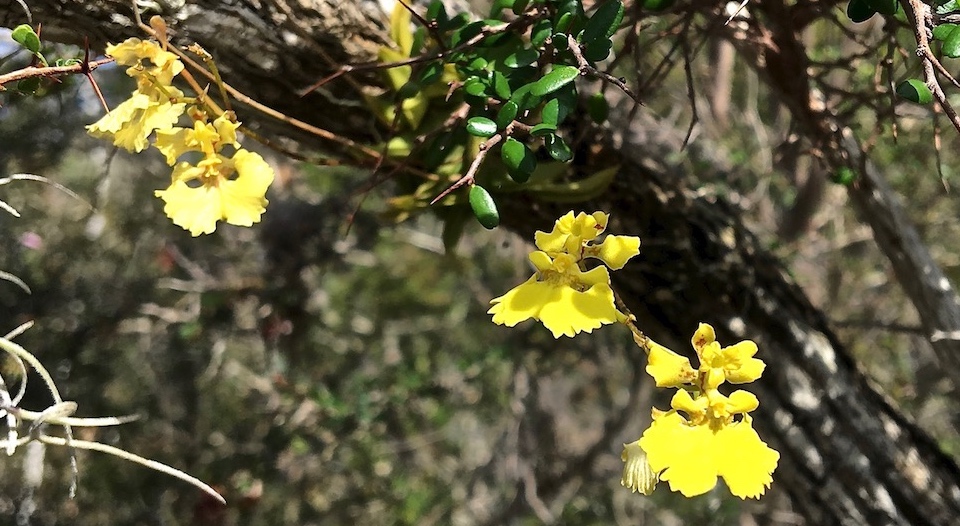
Regional Endemic Orchids – The Nipe-Sagua-Baracoa Range
A significant number of Baracoa’s protected areas are in the mountains of the Nipe-Sagua-Baracoa range, in the north-eastern part of the country. It is only natural that the list we offer you below with the endemic orchids of this region is relatively long.
In the highly humid ravines of smaller water streams grows this lovely Atopoglossum excentricum. It is a miniature epiphyte orchid, and it’s classified as threatened. We have seen it both on river Las Minas and river Duaba‘s banks.
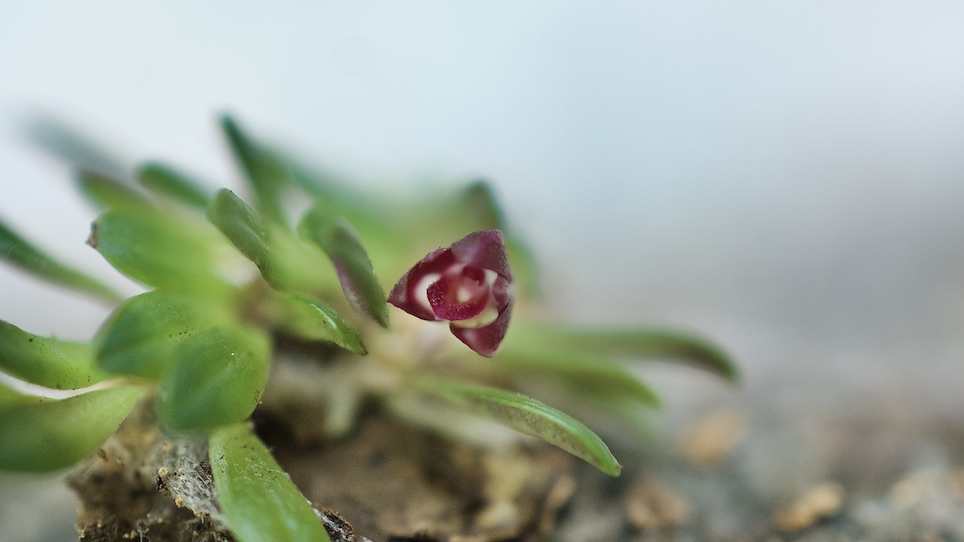
Another wonder in the same genus as the previous one and living in similar environments is Atopoglossum prostratum. It is also considered as threatened. We found it in ravines whose water streams lead to river Las Minas.
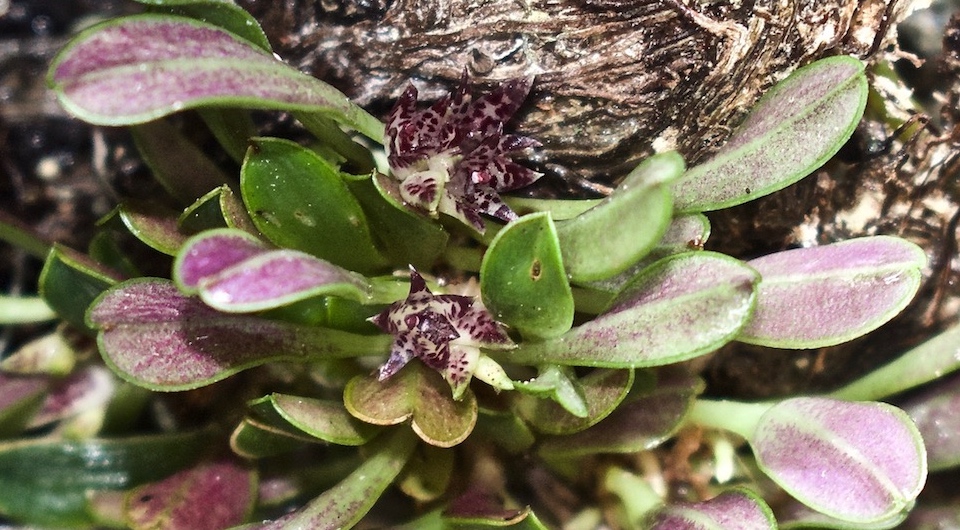
Flooded areas on certain riverbeds are home to Bletia antillana. One of the most interesting places where we have seen it is the area of river Báez.
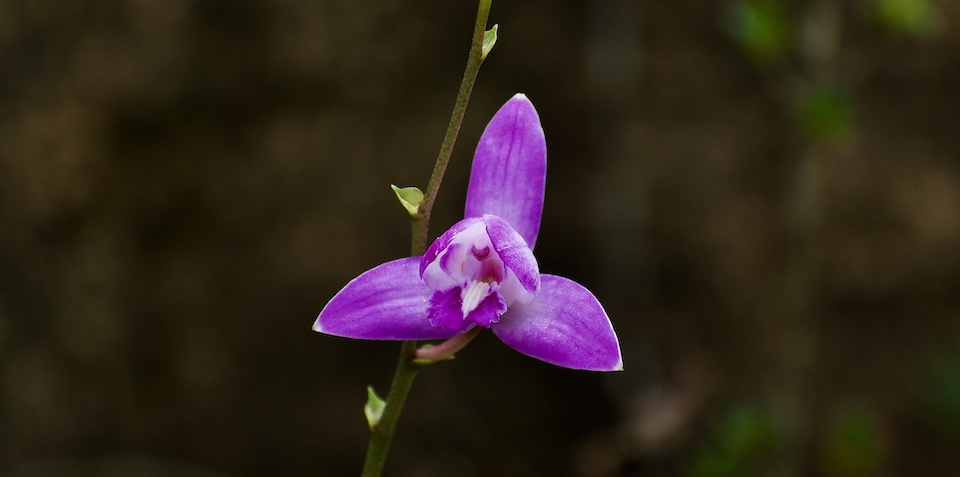
This other tiny one is not easy to spot, as its olive-green tones tend to blend in the surrounding vegetation. It’s a Bletia volubilis (until recently known as Basiphyllaea volubilis) and it was blooming in the El Recreo area, within Alexander Humboldt National Park. It is classified as critically endangered.
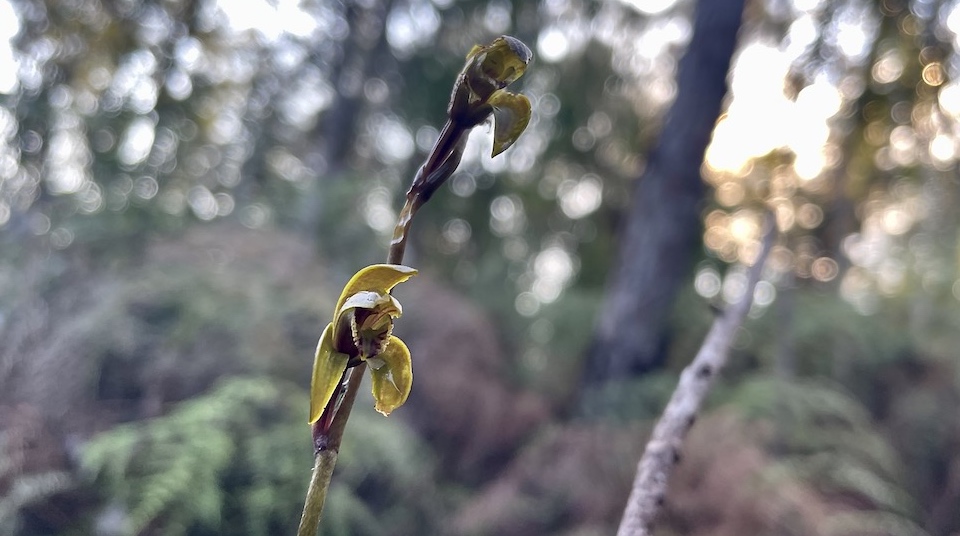
The woods at the Iberia Haut-plateau, some 600 meters above sea level, are home to the Dilomilis oligophylla. This alba individual caught our eye by the mirador on the trail leading to Laguna de Iberia.
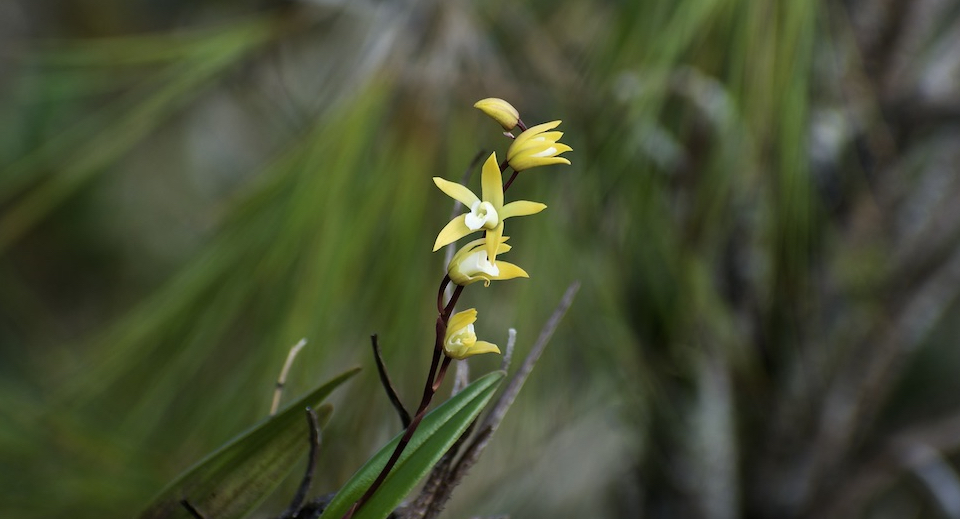
This Encyclia hamiltonii was floating high, attached to a royal palm trunk along Loma de Piedra trail, in Alexander Humboldt National Park. It has a healthy presence as well in river Báez’s banks.
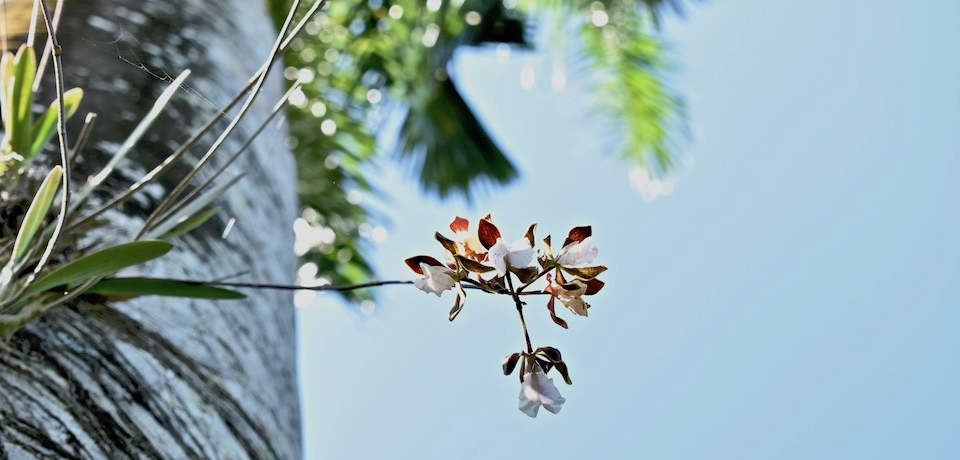
The Encyclia howardii is considered an endangered species. We found this one blooming in a steep rocky area, covered by extremely leafy vegetation by river Duaba.
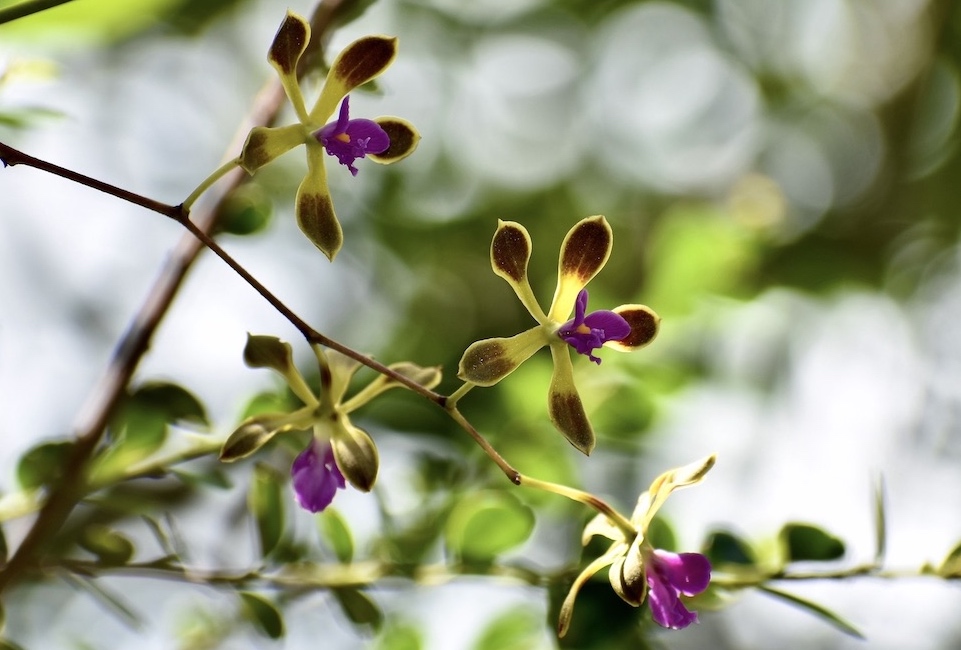
During its blooming season, the lithophyte Encyclia moebusii seems to be ubiquitous in Baracoa. The highest stretches of La Farola road are ideal to spot this species. We took this picture on the hills by river Las Minas.
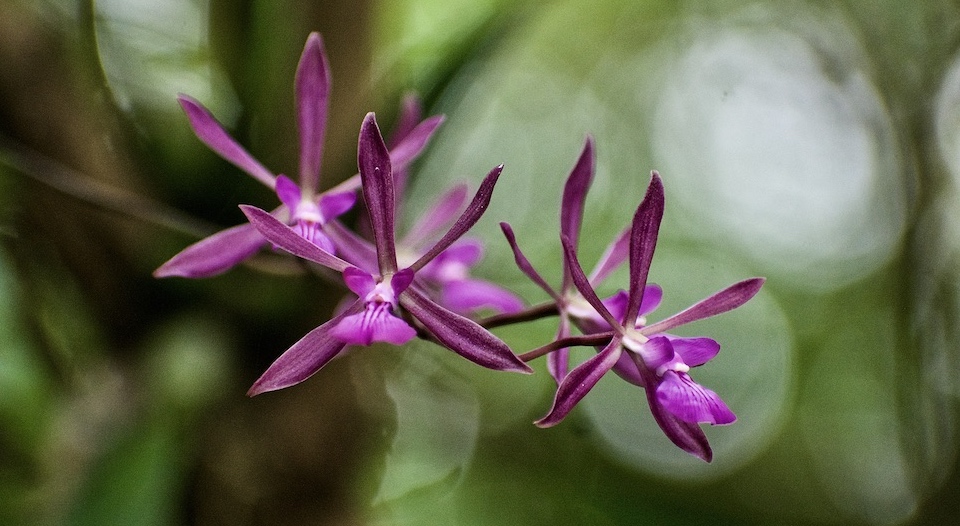
Formerly classified under the Lanium genus, the Epidendrum hioramii can be found by water streams and trails in several protected areas in our region. It grows both as an epiphyte and lithophyte.
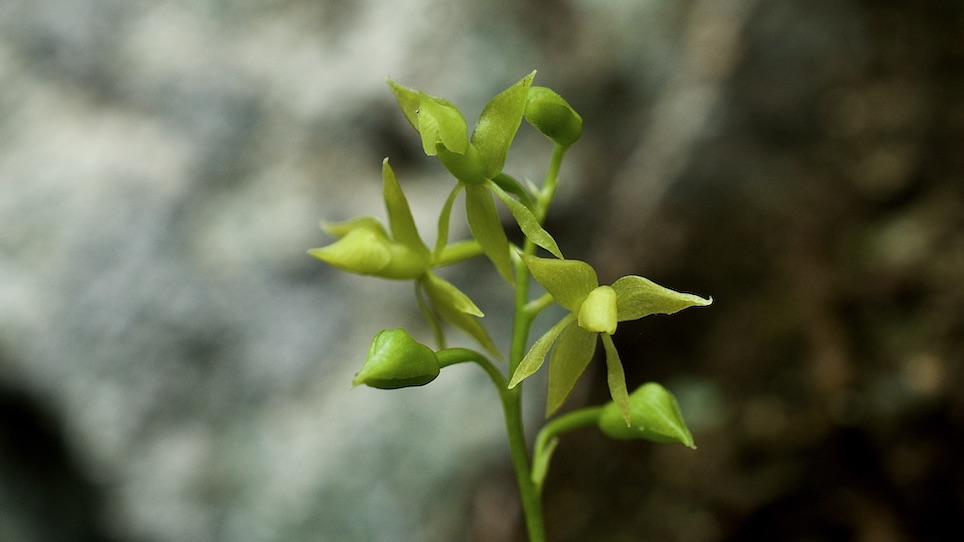
Here you have an Epidendrum orientale that we found on agricultural lands a couple of kilometers south of town. If you look closely, you’ll notice it is somewhat translucid, just as many other orchid species.
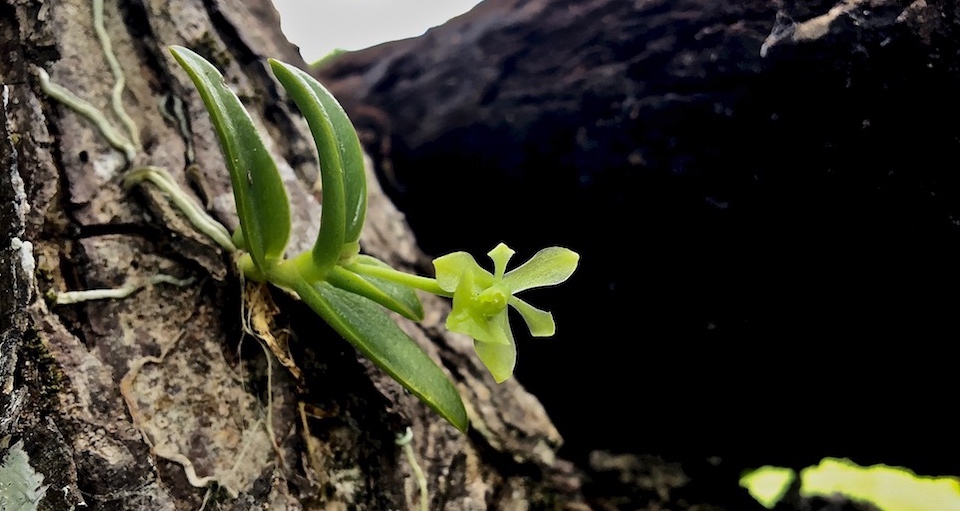
Miniature orchids belonging to the Lepanthes genus are fascinating. Their sepals and petals can measure less than 5 mm. One of them is this Lepanthes grisebachiana. It is only normal not to find it when your eyes are not trained, the more so given that the flowers “hide” under the plant’s leaves. It lives at the summit of mount El Yunque.
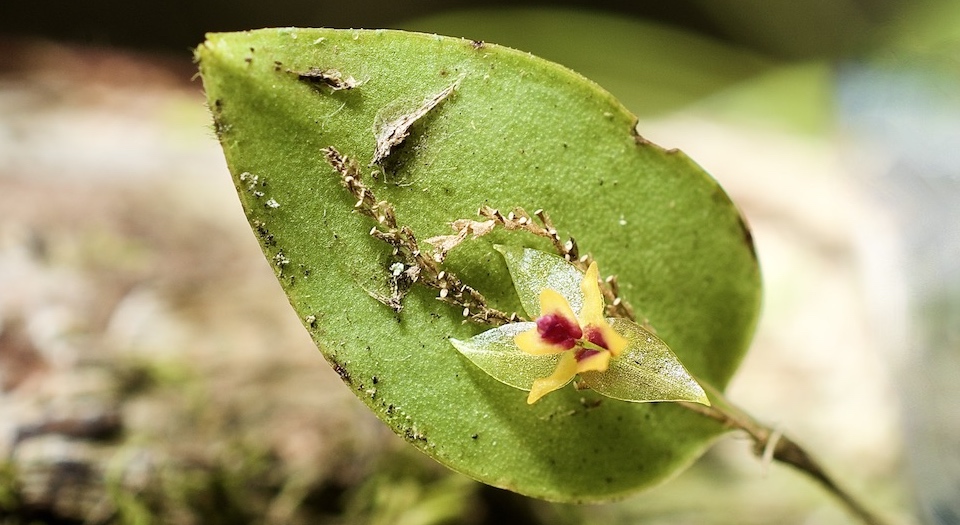
Two relatively less accessible locations that nonetheless offer really rewarding hikes are home to the Lepanthes wrightii: Salto Fino waterfall, near river Quibiján, and Laguna de Iberia, in the haut-plateau of the same name.
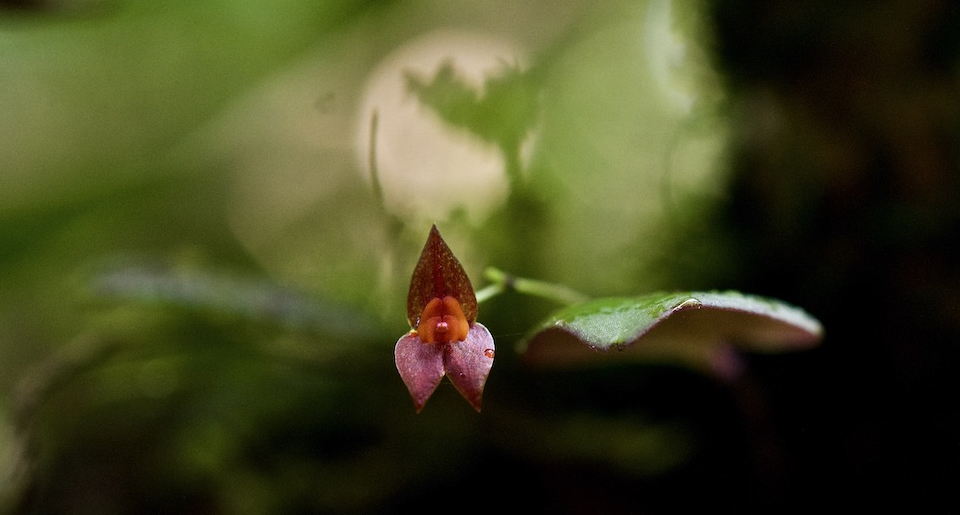
A favourite of ours among orchids living on serpentine rock environments is Tetramicra tenera. They are terrestrial and grow on red soil within pine/charrascal forests. This one caught our attention along the Loma de Piedra trail, in Alexander Humboldt National Park.

Local Endemics – Strictly Baracoan Orchids
Last, the following species are exclusive to the Baracoa region. You must come here if you want to see them!
A species that could be considered vulnerable, given their narrow range, is the natural hybrid Encyclia x-osmentii (hamiltonii x moebusii), recently located in the river Báez area.
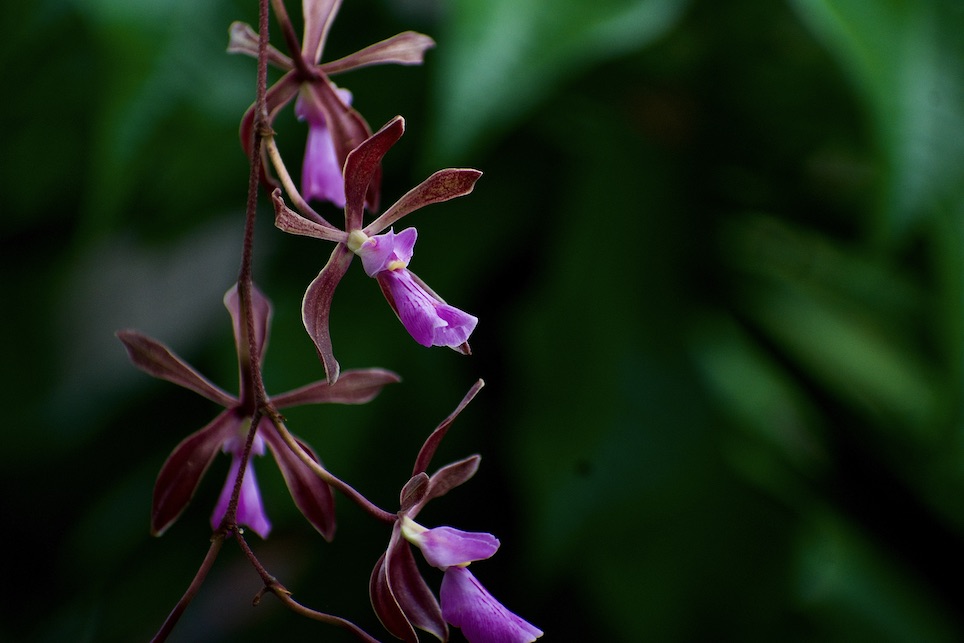
This minute Lepanthes macrolabia was only described in 2022. Although it has not been officially assigned a threat category, its tiny distribution along river Duaba should elicit appropriate protection measures.
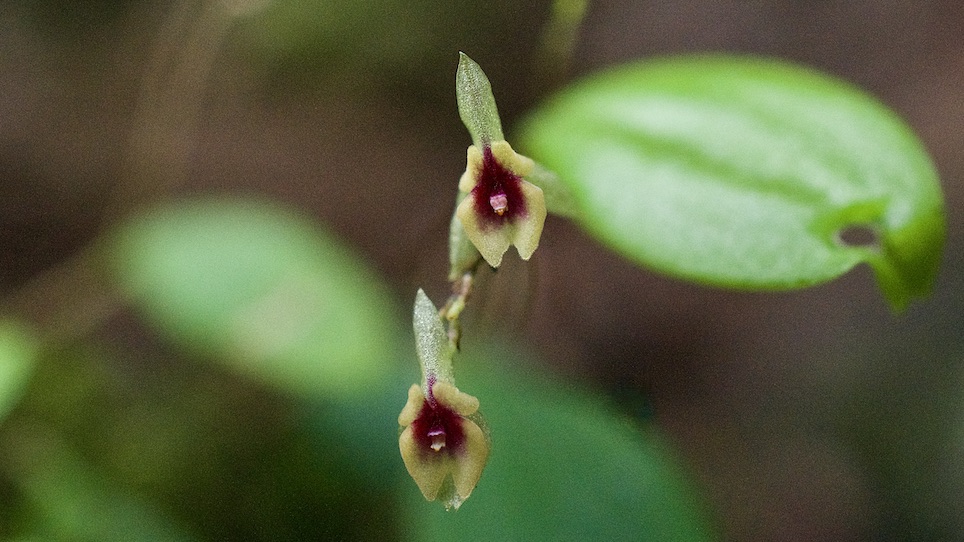
River Báez’s banks are home as well to this other beautiful miniature orchid: the Tetramicra riparia. It can be lithophyte or terrestrial in this serpentine rock soil. It was rather recently described, in 2012. Given its restricted range, the description’s authors proposed to classify it as a critically endangered species.
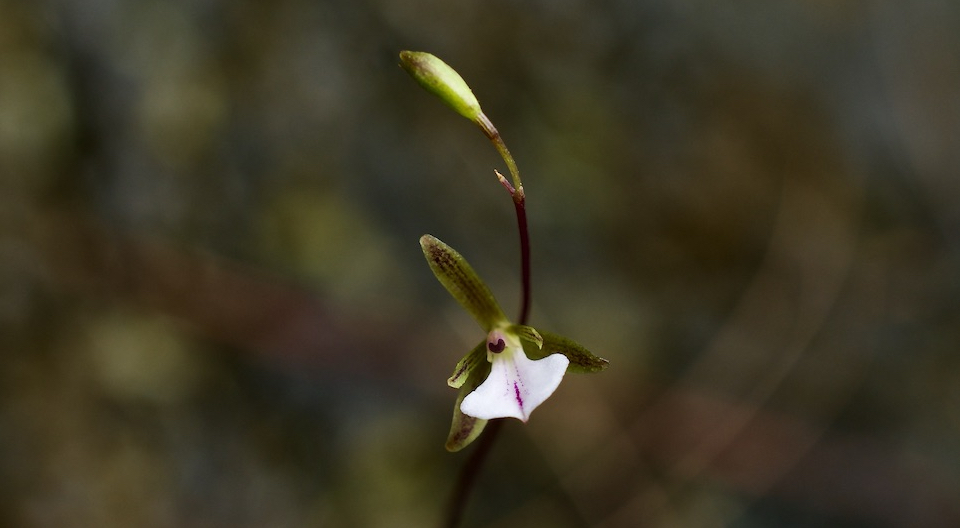
Yet to Be Described – Three More Baracoa-Endemic Species
Although the following three species perfectly fit within the previous section about Baracoa-endemic orchids, we introduce them separately because they are quite special: they are yet to be described, named, and recognized in taxonomic lists. They are: two Lepanthes and one Specklinia.
The first one, a Lepanthes, was documented and photographed by Llamacho and Larramendi, and included in their book The Orchids of Cuba / Las Orquídeas de Cuba (2005). Almost 20 years have passed, and it has not been described yet, but we are currently supporting its description process. Llamacho and Larramendi reported it at El Yunque’s summit (about 565 meters above sea level), but more recently our good friend Noel Coutin Lobaina documented it at a lower elevation (320 meters asl) in nearby karsts.
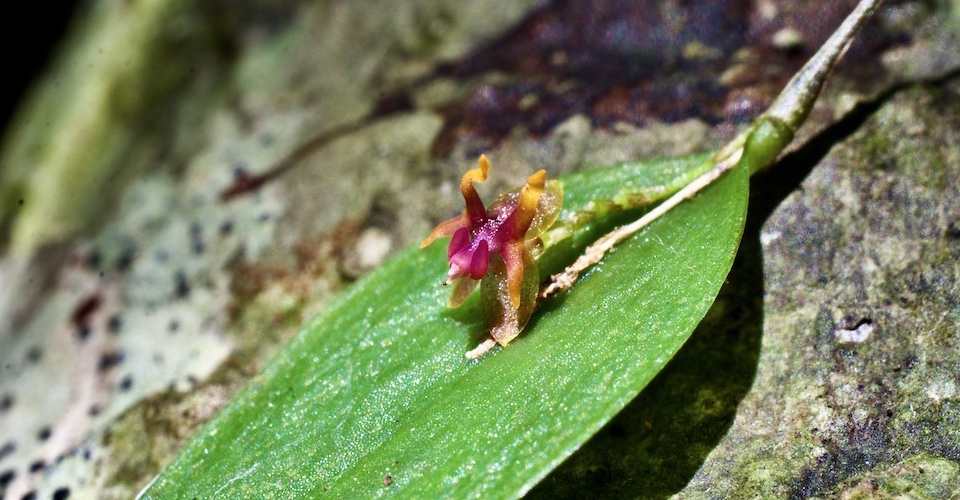
Precisely in those other karsts Noel spotted this Specklinia that has not been reported yet: there have never been pictures, nor mentions, nor anything about this orchid. It resembles the Pleurothallis grisebachiana, but there are differences. One of them is a considerable difference in size.
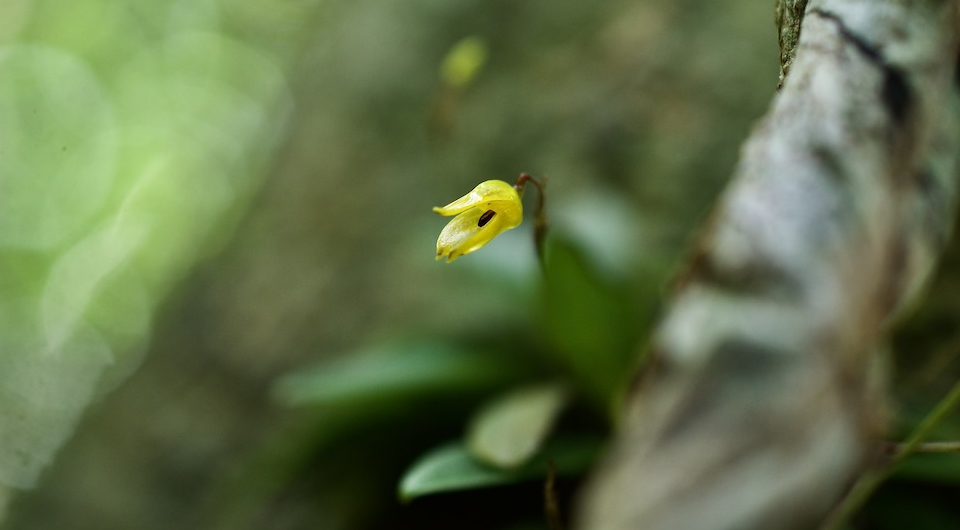
And a few weeks ago (March 2024), we discovered in the company of Noel this other Lepanthes, also never reported. We’ll only say that is lives near the Quibiján community, in river Toa’s basin. We will also be actively supporting from Baracoa its description process.
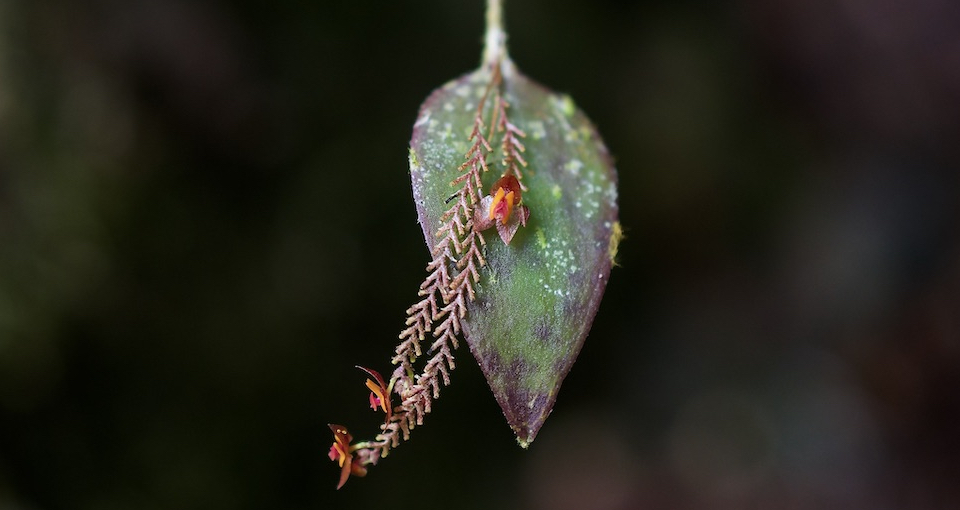
From Faraway Lands
To conclude, two orchids that arrived in Cuba from Africa and Asia and stayed here. The first one is of African origin and can now be found all over the country: Eulophia maculata (until recently classified under the Oeceoclades genus).
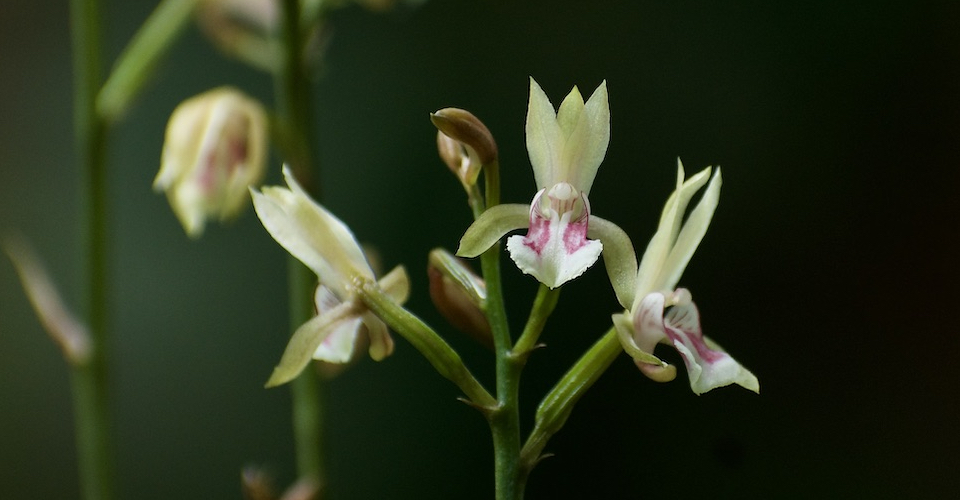
And the other one is the beautiful Phaius tankervilleae, Vietnam’s national flower.
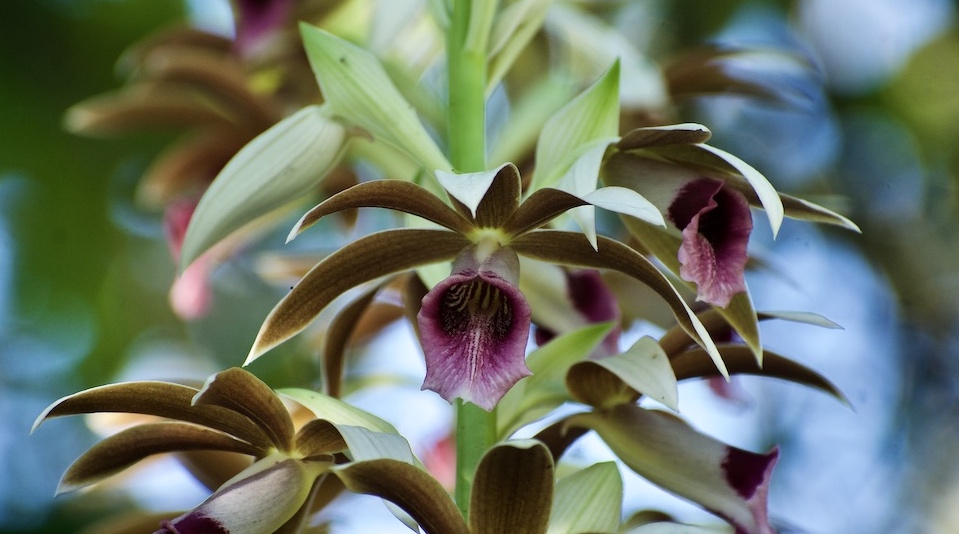
Practical Info for Your Orchidological Excursions
- The orchids we’ve shown you on this post are but a sample of the full range of species that bloom in the Baracoa and Maisí regions.
- Wild orchids can be found on almost any trail offered as an excursion in the Baracoa region. You don’t have to pick the dates of your stay around orchids in order to see them. But you can choose your excursions according to the month when you’re here in order to make the most of the orchid species blooming at the time of your visit. We offer you below a calendar showing the blooming season for each species.
- Not every individual who offers guiding services in Baracoa is an expert in orchids (some are stronger in terms of birdwatching, or ferns, for instance). An orchid-knowledgeable guide will make a huge difference for you if your goal is to discover Baracoa’s wild orchids.
- For budget details about any of the mentioned areas or trails, please click on the correspondent link provided above and go to the “Practical info and budget details” section at the bottom of the corresponding post.
Which orchids will be blooming when I visit Baracoa?
Here’s a calendar so you know which species will be in bloom when you come to our region. Alternatively – you can plan your visit to see the orchid or orchids of your choice. Or you can plan to come to Baracoa at a time when larger numbers of orchid species are blossoming. (Remember: this post shares only a limited sample of all the orchids you can find in Baracoa!)
Orchid Blooming Calendar • Baracoa Cuba
Acknowledgements to Our Guide and Local Expert
Our heartfelt thanks to our good friend Noel Coutin Lobaina, field expert in our region whose knowledge of orchids in Baracoa is unparalleled and who has been extremely generous in guiding us and sharing his knowledge with us. In late 2023, his book Inventario de las Orquídeas del Parque Nacional Alejandro de Humboldt, Sector Baracoa was launched. Noel is co-author of the identification of a natural location for the hybrid Encyclia xosmentii (moebusii x hamiltonii), in the Baracoa region, and one of the two individuals who first collected the Lepanthes macrolabia that served as a basis for its description. Needless to say, any errors or inaccuracies in our post are our entire responsibility – not his. We strongly recommend following his Facebook page Flora de Baracoa.
Sources Used and Recommended Reading
- Coutin Lobaina, Noel (2023), Inventario de las orquídeas del Parque Nacional Alejandro de Humboldt, Sector Baracoa, Ediciones Nuevos Mundos y Selvi Ediciones, St. Augustine (Florida) and Valencia, Spain, 71 pages.
- González Torres, L.R., Palmarola, A., González Oliva,
, Bécquer, E.R., Testé, E. & Barrios, D. (Eds.) (2016). Lista roja de la flora de Cuba. Bissea 10 (número especial 1), 352 pages. - Greuter, W., & Rankin, R. (2022): Plantas Vasculares de Cuba. Inventario. Tercera edición, actualizada, de espermatófitos de Cuba. Botanischer Garten und Botanisches Museum Berlin & Jardín Botánico Nacional, Universidad de La Habana. Posted online September 1st, 2022. 699 pages.
- Llamacho, J. A., & J.A. Larramendi (2005), The Orchids of Cuba/Las orquídeas de Cuba, Greta Editores, Lledia, Spain, 289 pages.
- Mújica, E. & E. González (2015), “A New Checklist of Orchid Species from Cuba“, in Lankesteriana, vol. 15, no. 3, Cartago.
- Oviedo Prieto R. & González Oliva L. (2015). Lista nacional de plantas invasoras en Cuba 2015. Bissea 9(2):1-96.
- Restrepo, E., M.A. Soto Calvo, A. Morales Martínez, (2022), “Orchid discoveries in the Caribbean: A new Lepanthes (Pleurothallidinae) with a gigantic disc-shaped lip endemic to Cuba“, in Phytotaxa 572 (2), Magnolia Press, pages 193-202.
- Soto Calvo, M.A., P. Esperón, R.P. Sauleda, N. Coutín Lobaina (2019), “A Locality for Encyclia xosmentii Sauleda & Esperon is Documented in Cuba“, in New World Orchidaceae – Nomenclatural Notes, Nomenclatural Note – Issue No. 52.
- Vale, Angel & Rojas, Danny & Acanda, Yosvanis & Sánchez-Abad, Natividad & Navarro, Luis. (2012). “A New Species of Tetramicra (Orchidaceae: Laeliinae) from Baracoa, Eastern Cuba“. Systematic Botany. 37. 883-892. 10.1600/036364412X656491.
- Valet, Denis (2016), Orchids of Cuba (PDF compilation).
Activities, Baracoa, Sustainable Tourism
Tags: Ecology, Forests, Hiking, Nature Tourism, Off the beaten path, Rivers, Trails

Recent Comments
What a lovely post! I’ve been hoping you’d write something dedicated to these lovely flowers. Its amazing how many species are endemic to Baracoa and how very many types of orchids can be seen there. Truly a botanist’s paradise!
Thank you, Cynthia! We had promised to post about Baracoa’s orchids and we (finally…) delivered! We’re happy to have shared a bunch of photos of such lovely flowers, inviting folks to visit the protected areas where they thrive! 🙂
Encyclia phonicea would have to be my favourite, I think. Looks bit like a fleur-de-lis, but much more elegant. 🙂
Hi Stefan! Encyclia phoenicea is a popular orchid among Cubans too. We love it! It has a delightful, delicate fragrance when it blooms… 🙂
Loved the fleur-de-lys comparison, but don’t try and tell the French that somewhere in the Caribbean there’s a much more elegant flower! 😉